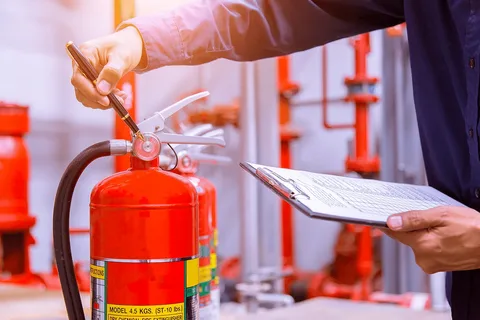Conducting a fire risk assessment is essential for any organization aiming to protect its people, property, and assets, especially when considering factors like the Fire Risk Assessment London Cost. An effective fire risk assessment report not only identifies potential fire hazards but also outlines steps to mitigate those risks. In this blog, we will explore the key elements to include in your fire risk assessment report to ensure it is comprehensive and effective.
Understanding the Purpose of a Fire Risk Assessment Report
Before diving into the elements of a fire risk assessment report, it’s important to understand its purpose. The report serves as a vital tool for identifying fire hazards, evaluating the risks associated with those hazards, and implementing appropriate measures to minimize or eliminate those risks. By documenting these findings, organizations can ensure compliance with fire safety regulations and foster a culture of safety within their premises.
Key Elements to Include in Your Fire Risk Assessment Report
Executive Summary
An executive summary is the first section of your report and should provide a concise overview of the assessment. This summary should highlight the main findings, including identified hazards and recommended actions. It serves as a quick reference for stakeholders who may not have the time to read the entire report but need to grasp the essential points.
Description of the Premises
In this section, you should provide a detailed description of the premises being assessed. Include information about the building’s size, layout, construction materials, and occupancy levels. It’s also helpful to note the types of activities that take place in the building, as these can influence the fire risks. Providing a clear picture of the environment sets the stage for understanding the specific risks involved.
Identification of Fire Hazards
Identifying potential fire hazards is a critical element of the assessment. This section should detail all the sources of ignition, fuel, and oxygen present in the premises. Common hazards may include electrical equipment, flammable materials, and cooking appliances. Be thorough in your analysis, as this step is essential for effective risk evaluation.
Risk Evaluation
Once the hazards have been identified, the next step is to evaluate the risks associated with each hazard. This section should discuss the likelihood of a fire occurring and the potential consequences should a fire break out. Consider factors such as the presence of fire protection measures, the layout of the building, and the behaviors of occupants. Use a simple risk matrix to categorize risks as low, medium, or high, which can help prioritize the necessary actions.
Current Fire Safety Measures
In this part of the report, outline the existing fire safety measures already in place. This may include fire alarms, sprinkler systems, fire extinguishers, and escape routes. Evaluate the effectiveness of these measures in mitigating risks and protecting occupants. This evaluation is important for understanding whether current measures are adequate or if improvements are necessary.
Recommendations for Improvement
Based on the identified hazards and the current safety measures, provide clear recommendations for improvement. This section should include actionable steps to mitigate risks, such as installing new fire alarms, conducting regular fire drills, or implementing training for employees on fire safety. Make sure that these recommendations are realistic and prioritize the most critical actions that need to be taken.
Action Plan
An effective fire risk assessment report should also include an action plan detailing how the recommended improvements will be implemented. This plan should assign responsibilities for each action, set timelines for completion, and outline any necessary resources. Having a structured action plan helps ensure that the recommendations are not just noted but actively pursued.
Conclusion
The conclusion of your fire risk assessment report should summarize the key findings and emphasize the importance of taking action. Reiterate the need for ongoing monitoring and regular reviews of fire safety measures. This section can also highlight the commitment of the organization to maintaining a safe environment for all occupants.If you want to stay updated with posts like this, please follow us on MyFlixers.

